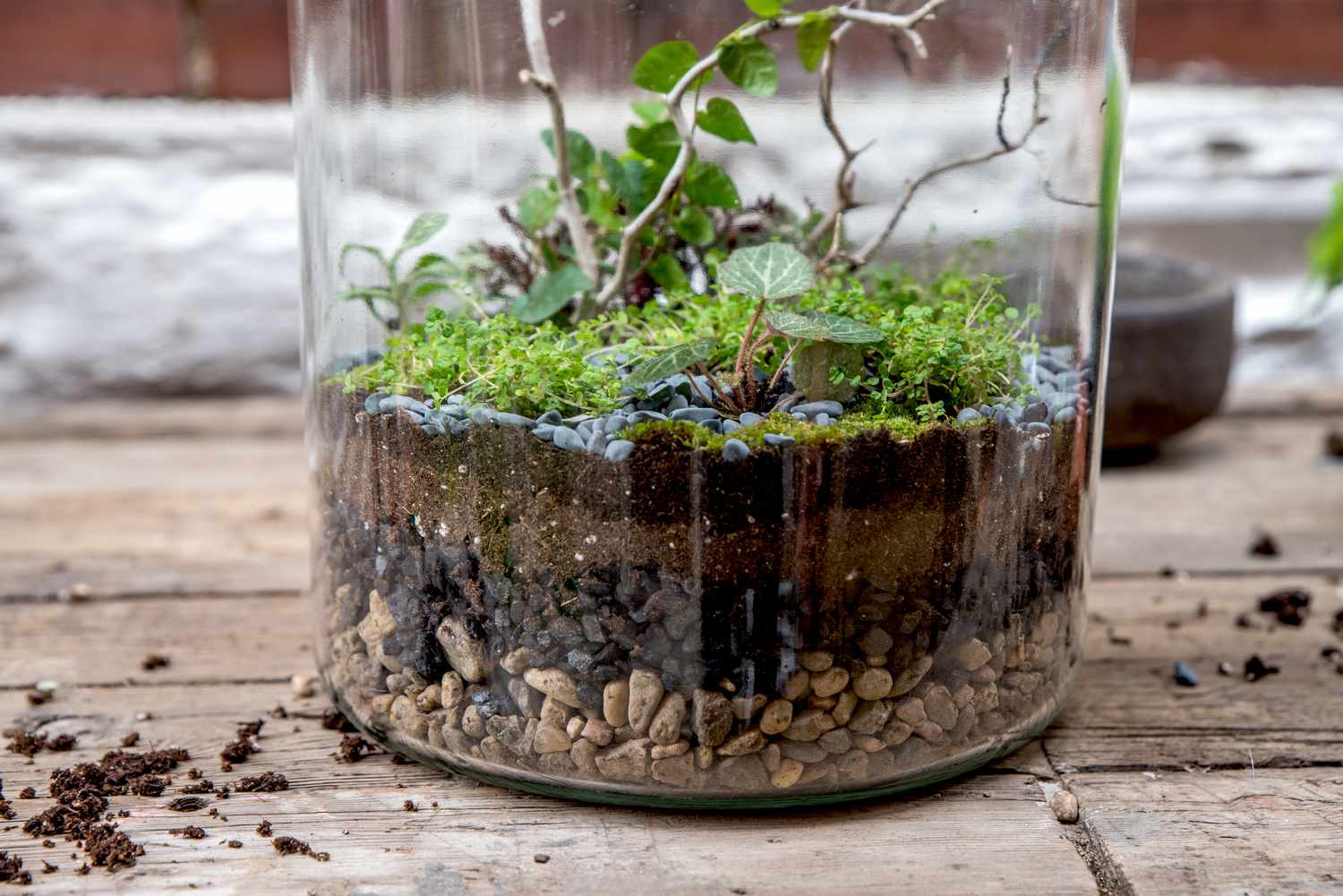Garden in a Glass: The World of Terrariums
Dive into the enchanting world of terrariums with "Garden in a Glass: The World of Terrariums." Discover how to create and care for these miniature ecosystems, bringing greenery and tranquility into your home.

Introduction

Terrariums offer a captivating glimpse into miniature ecosystems, bringing the beauty of nature into our homes in a compact and self-contained form. These glass-enclosed gardens require minimal maintenance and can thrive in a variety of environments, making them an ideal choice for both novice and experienced gardeners alike. In this article, we'll explore the enchanting world of terrariums, from their history and origins to practical tips for creating and caring for your own botanical masterpiece.
The Origins of Terrariums
The concept of the terrarium dates back to the 19th century when British botanist Nathaniel Bagshaw Ward discovered that plants could thrive inside sealed glass containers. Ward's experiments led to the creation of the Wardian case, a precursor to the modern terrarium, which revolutionized the transportation of delicate plant specimens and sparked a newfound interest in indoor gardening.
Types of Terrariums
Terrariums come in various shapes, sizes, and styles, each offering its own unique charm and appeal. Some popular types of terrariums include:
- Open Terrariums: Open terrariums feature an uncovered opening that allows for airflow and ventilation. These terrariums are well-suited for plants that prefer drier conditions and can tolerate higher levels of humidity.
- Closed Terrariums: Closed terrariums are sealed containers that create a self-sustaining ecosystem with minimal moisture loss. These terrariums are ideal for moisture-loving plants and require very little maintenance once established.
- Succulent Terrariums: Succulent terrariums feature drought-tolerant plants such as cacti and succulents, which thrive in arid conditions with minimal water. These terrariums are easy to care for and can add a touch of desert-inspired elegance to any space.
- Fairy Gardens: Fairy gardens are whimsical terrariums that incorporate miniature figurines, accessories, and decorations to create enchanting scenes straight out of a fairy tale. These terrariums are popular among children and adults alike and offer endless opportunities for creativity and imagination.
Creating Your Own Terrarium
To create your own terrarium, you'll need the following materials:
- A glass container or vessel with a wide opening
- Gravel or pebbles for drainage
- Activated charcoal to prevent odors and mold
- Potting soil or a specialized terrarium mix
- Small plants suited to your terrarium type
- Decorative elements such as rocks, moss, or figurines
Follow these steps to assemble your terrarium:
- Start by adding a layer of gravel or pebbles to the bottom of your container to aid in drainage.
- Add a thin layer of activated charcoal on top of the gravel to absorb excess moisture and prevent odors.
- Add a layer of potting soil or terrarium mix, making sure to create a level surface for planting.
- Carefully remove your plants from their pots and arrange them in the soil, leaving space between each plant to allow for growth.
- Add decorative elements such as rocks, moss, or figurines to enhance the visual appeal of your terrarium.
- Water your terrarium lightly, taking care not to overwater, and place it in a location with indirect sunlight.
Caring for Your Terrarium
Caring for a terrarium is relatively simple and requires only minimal maintenance. Follow these tips to keep your terrarium healthy and thriving:
- Water sparingly: Overwatering is one of the most common mistakes made with terrariums. Only water your terrarium when the soil feels dry to the touch, and be sure to use a spray bottle or watering can with a fine mist to avoid saturating the soil.
- Monitor humidity levels: Closed terrariums create a humid environment that can lead to excessive moisture buildup. Keep an eye on condensation levels inside the container and remove the lid if necessary to allow for airflow.
- Prune as needed: Regular pruning will help keep your terrarium looking neat and tidy. Remove any dead or yellowing leaves, as well as any plants that have outgrown their space.
- Rotate for even growth: Rotate your terrarium periodically to ensure that all sides receive equal sunlight and prevent plants from leaning or stretching toward the light source.
Conclusion
Terrariums offer a delightful way to bring the beauty of nature indoors, creating miniature landscapes that inspire wonder and tranquility. Whether you're a seasoned gardener or new to the world of indoor plants, creating and caring for a terrarium is a rewarding and enjoyable experience that can bring greenery and serenity into your home.